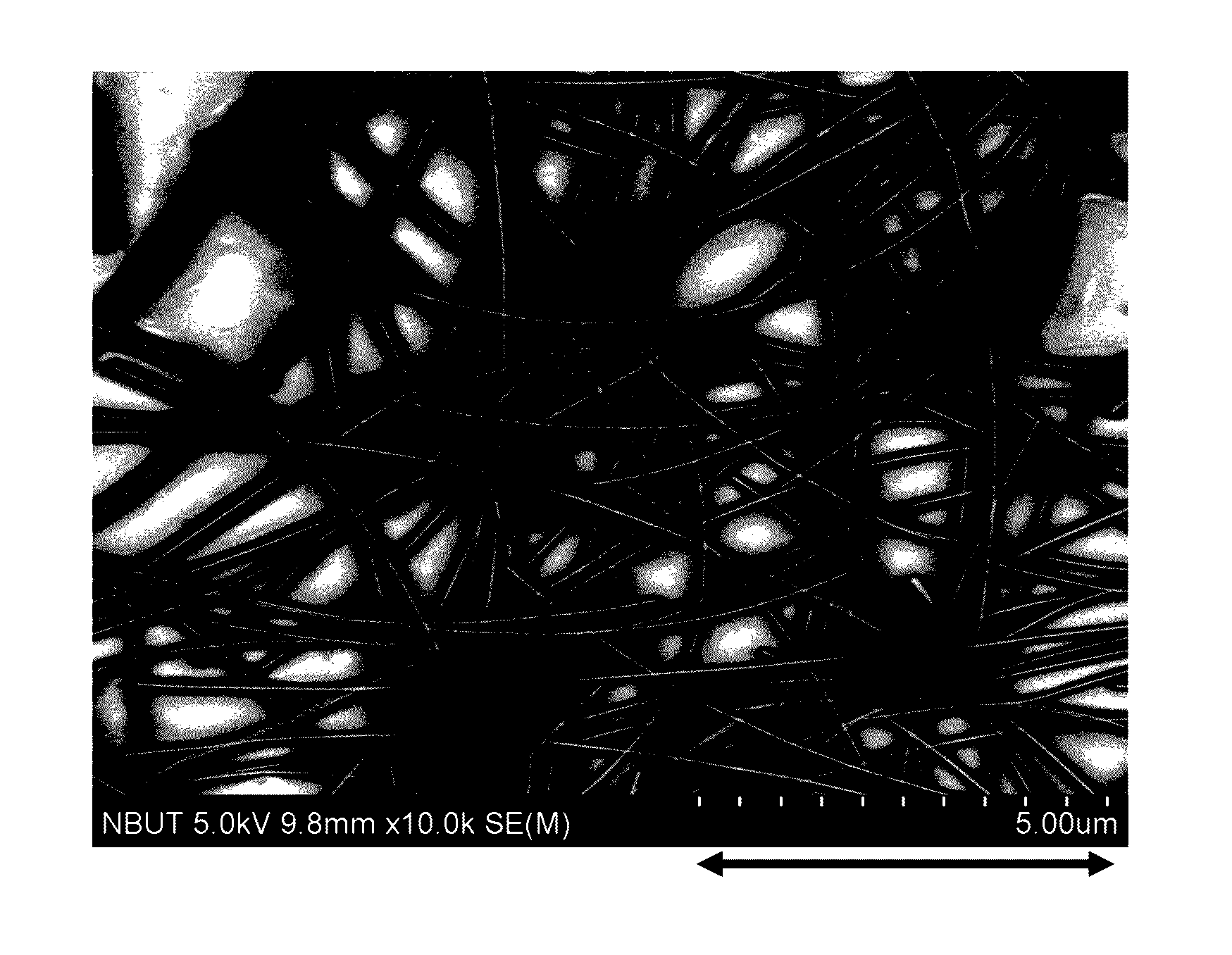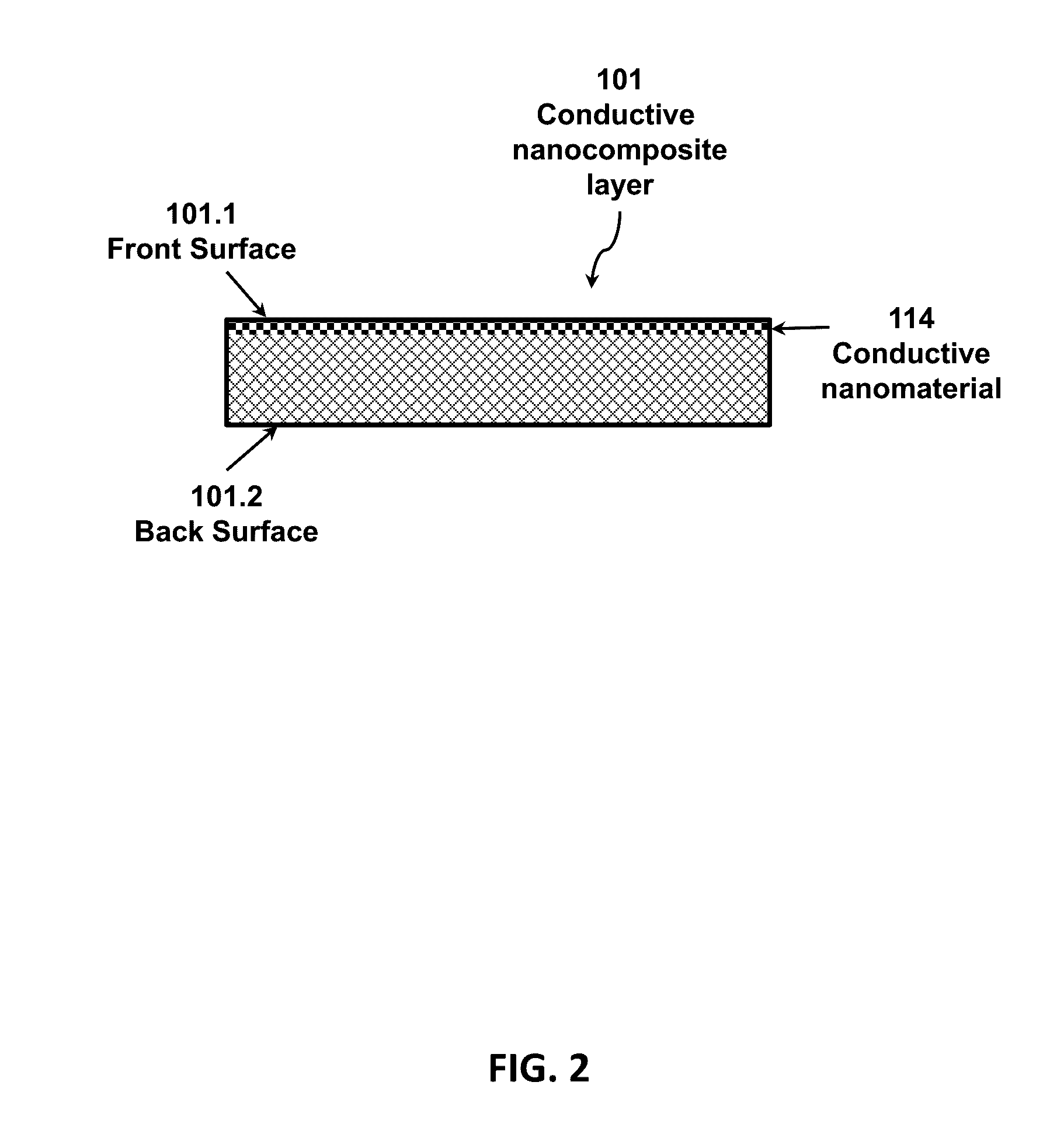Transferable nanocomposites for touch sensors
- Summary
- Abstract
- Description
- Claims
- Application Information
AI Technical Summary
Benefits of technology
Problems solved by technology
Method used
Image
Examples
example 1
[0153]Following materials were used in the examples disclosed below.
[0154]PET films, with thickness of about 100 micrometers were purchased from SPF Energetic Film (China), with a product number WCD-100 μm, and used as protective films 102. These films had high thermal stability, with a linear thermal expansion rate of about 0.5% and about 1.0% at horizontal and vertical directions respectively.
[0155]Silicon oil coated PET films (CT1) were purchased from Alivin Film (China), with a product number 3140709012, and used as release films 103. The thickness of these films was about 75 micrometers. The peeling adhesion of these films was measured by FTM1-FINAT method No. 1 at 180° and at a peeling speed of about 300 mm / min. The measured peeling adhesion of these films was T1.
[0156]PMMA substrates were purchased from Shenzhen Huiwanchuan Plastic Film Co., Ltd. Thickness of these PMMA substrates was about 0.8 mm.
[0157]Glass substrates were about 1 mm thick microscopic glass slides.
[0158]Sil...
examples 2-5
Transferrable Silver Nanowire Nanocomposite
[0165]Example 2 was carried out as follows. A PET film WCD-100 μm was the protective film 102. Referring to FIG. 8, a silver nanowire dispersion was prepared by diluting the AW030-LP by isopropanol to obtain a mixture with a silver nanowire concentration of about 4.0 mg / ml. Then, a liquid silver nanowire dispersion layer 104 was formed on the PET film, by using the Meyer rod #5 and the drawdown machine (1A Deposition). After the formed component was air dried for about 2 minutes, it was moved into a regular oven and heated for about 5 minutes at about 150° C. (1B Heating). A first component 106 comprising a dried nanomaterial layer 105 and a protective film 102 was thereby prepared.
[0166]On the silver nanowire layer 105, a liquid formulation comprising (a) monomers: SR 285, SR238, SR351; and (b) catalysts: Irgacure 754 and Iganox 1010 was applied (1C Wet coating). A second component 108 comprising a conductive nanomaterial and liquid monome...
example 6
Preparation of Single-Sided Transparent Conductive Electrode
[0170]This example was carried out, as shown in FIG. 9, as follows. In this example, the transferable silver nanowire nanocomposite 100 prepared in Example 2 was used. The release PET film 103 was first peeled off from the transferable nanocomposite (2A Peel-off). On a rigid PMMA substrate 110, a lamination liquid formulation containing (a) monomers SR 285, SR238, and SR351; and (b) catalysts: Irgacure 754 and Iganox 1010 was applied (2B Deposition). This formed a component comprising a liquid lamination formulation layer 112 and a transparent substrate 110. The transferable conductive nanocomposite 100 was then layered on the liquid lamination formulation layer 112 with its back surface 101.2 contacting with the liquid layer (2C Layering). Excess amount of the liquid lamination formulation layer 112 was driven off by applying the Meyer rod #0 on the drawdown machine. The component thereby prepared was then moved to the UV ...
PUM
| Property | Measurement | Unit |
|---|---|---|
| Electrical conductivity | aaaaa | aaaaa |
| Concentration | aaaaa | aaaaa |
| Transparency | aaaaa | aaaaa |
Abstract
Description
Claims
Application Information
 Login to View More
Login to View More - R&D Engineer
- R&D Manager
- IP Professional
- Industry Leading Data Capabilities
- Powerful AI technology
- Patent DNA Extraction
Browse by: Latest US Patents, China's latest patents, Technical Efficacy Thesaurus, Application Domain, Technology Topic, Popular Technical Reports.
© 2024 PatSnap. All rights reserved.Legal|Privacy policy|Modern Slavery Act Transparency Statement|Sitemap|About US| Contact US: help@patsnap.com










